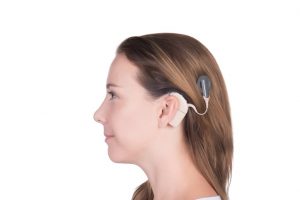
For some people, surgery is a far more effective solution to hearing problems than hearing aids, but once again, this isn’t a solution for the masses and only a select few are eligible for surgery.
The success of hearing loss surgery depends on the cause of the hearing loss. For example, sensorineural hearing loss, which involves the nerves, may be treated with surgery as the surgery targets the nerves to improve hearing. Other causes of hearing loss include trauma, illness, tumors, medications, and older age, and some of these causes may benefit from surgery while others do not.
It’s important to understand the different types of hearing loss surgery which are available and when they would be utilized to determine whether you would benefit from undergoing surgery or not for hearing loss.
Types of Hearing Loss Surgery
Cochlear implants: This type of surgery is conducted in adults and children with severe sensorineural hearing loss. The implants help to restore partial hearing and it does this by bypassing damaged nerves as opposed to hearing aids, which simply amplify sound. A small device is placed behind the ear and is attached to electrodes on the cochlea.
Hearing aid implants: External hearing aids allow for the patient to remove them and adjust them, but a hearing aid implant is to ensure extended hearing. The implant allows for stimulation of the cochlea by transmitting sounds through the bone and skull. This procedure is typically for patients with middle ear or outer ear problems or congenital defects of the ear where hearing aids offer no benefits. For a patient to undergo a hearing aid implant, they have to have at least one ear with moderate hearing.
Pressure equalizing (PE) tubes: Tubes are inserted into the ear to equalize pressure and to allow air to pass through to the eustachian tube to prevent blockages due to fluid build-up. The eustachian tube connects the middle ear to the back of the nose. This procedure is typically for younger children who suffer from chronic ear infections and is not advised for adults, as there is a higher risk of complications. When performed on adults, it is to correct hearing loss linked with malformed eardrums or problematic eustachian tubes.
Stapedectomy: This surgery is conducted on children born with a condition that causes abnormal bone growth within the middle ear – known as otosclerosis. This bone growth limits vibrations in the ear, which are important to send sound waves to the brain. The surgery removes the excess bone, muscle, and tissue to better allow sound waves to travel.
Working with your doctor can help determine if surgery is needed or helpful for your unique case of hearing loss.
Also read:
- Balloon popping may lead to hearing loss
- Is your heart causing your hearing loss?
- Everyday noises that are causing your hearing loss